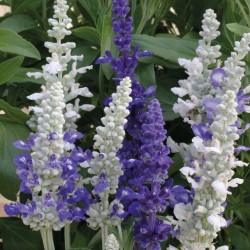Menu
-
MenuVissza
- Home
-
Kategóriák
-
-
Kategóriák
-
Zöldségmagok
-
Fajták országonként
- Fajták Örményország
- Fajták BiH
- Fajták Horvátországból
- Fajták Franciaországból
- Varieties from Germany
- Varieties from Greece
- Varieties from Hungary
- Fajták India
- Varieties from Italy
- Fajták Japánból
- Fajták Észak-Macedónia
- Varieties from Peru
- Varieties from Russia
- Varieties from Serbia
- Szlovéniából származó fajták
- Varieties from Spain
- Varieties from Thailand
- Fajták Törökország
- Varieties from USA
- Paradicsommag
- Kukoricamag
- Tök család magjai
- Babcsalád
- Uborka mag
- Paprikamag
- Sárgarépa család
- Hagyma család
- Saláta magok
- Burgonya család
- Káposzta család
- Retekmag
- Cékla család
- Görögdinnye magok
- Dinnye magok
- Karfiolmag
- Napraforgó család
-
Fajták országonként
- Gyümölcsmag
- Chili paprika magok
- Gyógynövénymagok
- Hegymászó növények magjai
- Fák - cserje - magok
- Pálma mag
- Díszes fűmagok
- Dohánymagok
-
Zöldségmagok
-
-
-
-
- ÚJ TERMÉKEK
- Fiók létrehozása
- Szállítás - fizetés
- FAQ
Last Product Reviews
Out of the two seeds, one germinated and the other one was dead and floatin...
By
 Riikka H on 07/03/2024
Riikka H on 07/03/2024
Verified Purchase
23 termék található.
16-23 / 23 elem mutatása
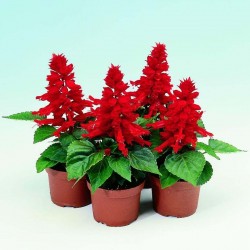
Scarlet Sage - Tropical...
Ár
2,00 €
(SKU: F 23)
Seeds Gallery EU,
5/
5
<div id="idTab1" class="rte">
<h3><span style="font-size:14pt;"><strong>Scarlet Sage - Tropical Sage Seeds (Salvia splendens)</strong></span></h3>
<h3><span style="color:#ff0000;font-size:14pt;"><strong>Price for Package of 50 seeds.</strong></span></h3>
<div>Salvia splendens (Scarlet Sage, Tropical Sage) is a tender herbaceous perennial that is native to Brazil, growing at 2,000 to 3,000 m (6,600 to 9,800 ft) elevation where it is warm year-round and with high humidity. The native plant, rarely seen in cultivation, reaches 1.3 m (4.3 ft) tall. Smaller selections are very popular as bedding plants, seen in shopping malls and public gardens all over the world.</div>
<div>Taxonomy</div>
<div>S. splendens was first described and named in 1822. At that time it was given the common name Lee's Scarlet sage. Before the plant was selected to become dwarf in size, an early Dutch selection named 'Van Houttei' was chosen and is still popular in the horticulture trade.</div>
<div>Description</div>
<div>The native type is rarely used or described, though it grew from 1.5 to 8 m (4.9 to 26 ft) in height. The most common selections are the dwarf sizes that go by names such as 'Sizzler' and 'Salsa', and planted en masse in gardens and malls. 'Van Houttei' reaches 1 to 1.3 m (3.3 to 4.3 ft) in height. The various types typically have red flowers.</div>
<div>Named cultivars include S. splendens 'Alba', with white flowers; 'Atropurpurea', with dark violet to purple flowers; 'Atrosanguinea', flowers dark red; 'Bicolor', flowers white and red; 'Bruantii', small, with red flowers; 'Compacta', small, flowers in dense racemes, white or red; 'Grandiflora', large, with large red flowers; 'Issanchon', small, with white flowers striped pink to red; 'Nana', an early-flowering cultivar, with red blossoms; 'Scarlet Pygmy', a very dwarf, early flowering seed race with intense scarlet blossoms; 'Semperflorens', continuous flowering; 'Souchetii', small, with white or red flowers; 'St. John's Fire', dwarf plants with dense, abundant, bright red, early-flowering, long-lasting blossoms; and 'Violacea', flowers dark violet to purple. The cultivars 'Red arrow', 'Vanguard' and 'Van-Houttei' have gained the Royal Horticultural Society's Award of Garden Merit.</div>
</div>
F 23

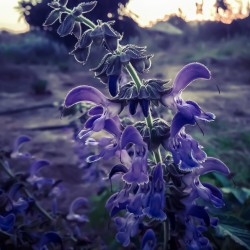
Red sage, Chinese sage Seeds
Ár
1,95 €
(SKU: MHS 23)
Seeds Gallery EU,
5/
5
<!DOCTYPE html>
<html>
<head>
<meta http-equiv="Content-Type" content="text/html; charset=UTF-8" />
</head>
<body>
<h2><strong>Red sage, Chinese sage Seeds (Salvia miltiorrhiza)</strong></h2>
<h2><span style="color: #ff0000;"><strong>Price for Package of 25 seeds.</strong></span></h2>
<p style="margin: 0in 0in 8pt; line-height: 107%; font-size: 11pt; font-family: Calibri, sans-serif;">Salvia miltiorrhiza (simplified Chinese: <span style="font-family: 'MS Gothic';">丹参</span>; traditional Chinese: <span style="font-family: 'MS Gothic';">丹參</span>; pinyin: dānshēn), also known as red sage, Chinese sage, tan shen, or danshen, is a perennial plant in the genus Salvia, highly valued for its roots in traditional Chinese medicine.[2] Native to China and Japan, it grows at 90 to 1,200 m (300 to 3,940 ft) elevation, preferring grassy places in forests, hillsides, and along stream banks. The specific epithet miltiorrhiza means "red ochre root". Since the outbreak of SARS in 2003, this herb has been tested for treatment of COPD with promising results.</p>
<p style="margin: 0in 0in 8pt; line-height: 107%; font-size: 11pt; font-family: Calibri, sans-serif;"><b>Chemical constituents</b></p>
<p style="margin: 0in 0in 8pt; line-height: 107%; font-size: 11pt; font-family: Calibri, sans-serif;">Chemical compounds isolated from Salvia miltiorrhiza include salvianolic acid (or salvianolic acid B),[3][4] dihydrotanshinone, tanshinone I, and tanshinone IIA.[5][6] Tanshinone IIA is one of the most abundant constituents of the root of Salvia miltiorrhiza.[5]</p>
<p style="margin: 0in 0in 8pt; line-height: 107%; font-size: 11pt; font-family: Calibri, sans-serif;"><b>Description</b></p>
<p style="margin: 0in 0in 8pt; line-height: 107%; font-size: 11pt; font-family: Calibri, sans-serif;">S. miltiorrhiza is a deciduous perennial with branching stems that are 30 to 60 cm (0.98 to 1.97 ft) tall, with widely spaced leaves that are both simple and divided. The 30 cm (0.98 ft) inflorescences are covered with hairs and sticky glands. Flowers grow in whorls, with light purple to lavender blue corollas that are approximately 2.5 cm (0.082 ft) long, with a dark purple calyx. Salvia miltiorrhiza prefers well draining soil, with about half a day of sunlight. It is hardy to approximately −10 °C (14 °F).[7] Most Salvia seeds have a higher germination rate when exposed to light, though it is not required.[8]</p>
<p style="margin: 0in 0in 8pt; line-height: 107%; font-size: 11pt; font-family: Calibri, sans-serif;"><b>Drug interactions</b></p>
<p style="margin: 0in 0in 8pt; line-height: 107%; font-size: 11pt; font-family: Calibri, sans-serif;">Danshen may potentiate the effects of the anticoagulation drug warfarin, possibly causing bleeding complications.[5][9][10] Other adverse effects may include allergic reactions, dizziness, headache, or gastrointestinal upset.[5]</p>
<p style="margin: 0in 0in 8pt; line-height: 107%; font-size: 11pt; font-family: Calibri, sans-serif;"><b>Traditional Chinese medicine</b></p>
<p style="margin: 0in 0in 8pt; line-height: 107%; font-size: 11pt; font-family: Calibri, sans-serif;">Alone or combined with other Chinese herbal medicines, Salvia miltiorrhiza has been used in China and, to a lesser extent, in other countries as a treatment for various cardiovascular and cerebrovascular diseases.[5][9] A 2007 Cochrane review of the use of danshen for acute ischaemic stroke found that the quality of evidence was poor, and there was no evidence of benefit.[11] Similarly, a 2008 Cochrane meta-analysis found the clinical trials on danshen were low in quality, and were insufficient to make any judgment about its efficacy for people with heart attack.[12] Meta-analyses of oral and injectable forms of danshen in people with angina concluded that the effects of the treatment were inconclusive because the studies were low in quality and the conclusions were not based on strong evidence.</p>
</body>
</html>
MHS 23


Óriás növény (óriás gyümölcsökkel)
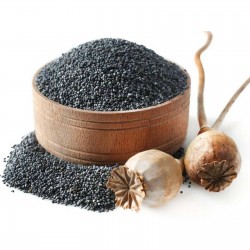
1000 to 5000 Seeds Op....
Ár
3,50 €
(SKU: MHS 139)
Seeds Gallery EU,
5/
5
<h2><strong><b>Opium Poppy<span style="font-size: 17.5px;"> </span></b>Seeds (Papaver Somniferum)</strong></h2>
<h2><span style="color: #ff0000;"><strong>Price for Package of 1000 (1g), 2000 (2g), 5000 (5g) seeds.</strong></span></h2>
<p>Papaver somniferum, the Opium poppy, is the species of plant from which opium and poppy seeds are derived. Opium is the source of many narcotics, including morphine (and its derivative heroin), thebaine, codeine, papaverine, and noscapine. The Latin botanical name means the "sleep-bringing poppy", referring to the sedative properties of some of these opiates.</p>
<p>The opium poppy is the only species of Papaveraceae that is an agricultural crop grown on a large scale. Other species, Papaver rhoeas and Papaver argemone, are important agricultural weeds, and may be mistaken for the crop.</p>
<p>It is also valuable for ornamental purposes, and has been known as the "common garden poppy", referencing all the group of poppy plants.</p>
<p>Poppy seeds of Papaver somniferum are an important food item and the source of poppyseed oil, a healthy edible oil that has many uses.</p>
<p><strong>Description</strong></p>
<p>Papaver somniferum is an annual herb growing to 100cm. All parts of the plant are strongly glaucous, giving a greyish-green appearance, and the stem and leaves are sparsely covered with coarse hairs. The leaves are lobed and clasp the stem at the base. The flowers are up to 120mm diameter, normally with four white, mauve or red petals, sometimes with dark markings at the base. The fruit is a hairless, rounded capsule topped with 12–18 radiating stigmatic rays. All parts of the plant exude white latex when wounded.</p>
<p><strong>History</strong></p>
<p>Use of the opium poppy predates written history. Images of opium poppies have been found in ancient Sumerian artifacts (circa 4000 BC). The making and use of opium was known to the ancient Minoans.[7] Its sap was later named opion by the ancient Greeks, from whence it gained its modern name of opium.</p>
<p>Opium was used for treating asthma, stomach illnesses, and bad eyesight.</p>
<p>The First and Second Opium Wars among China, the British Empire and France took place in the late 1830s through the early 1860s, when the Chinese attempted to stop western traders smuggling opium into their country.</p>
<p>Many modern writers, particularly in the 19th century, have written on the opium poppy and its effects, notably Thomas de Quincey in Confessions of an English Opium Eater</p>
<p>The French Romantic composer Hector Berlioz used opium for inspiration, subsequently producing his Symphonie Fantastique. In this work, a young artist overdoses on opium and experiences a series of visions of his unrequited love.</p>
<p>Opium poppies (flower and fruit) appear on the coat of arms of the Royal College of Anaesthetists.</p>
<p><strong><em>Legality</em></strong></p>
<p> Opium poppy cultivation in the United Kingdom does not require a license, but extracting opium for medicinal products does.</p>
<p> In Italy, it is forbidden to grow P. somniferum to extract the alkaloids, but small numbers of specimens can be grown without special permits for purely ornamental purposes.</p>
<p> Unlike in its neighbour countries Austria and Switzerland, where opium poppy is still cultivated legally, it has been delegalized in Western Germany after World War II, extending this regulation after German reunification in 1990 also to territories of former GDR, where opium poppy cultivation had remained legal until then.</p>
<p> In the United Arab Emirates, where the drug law is especially stern, at least one man was reported to have been imprisoned for possessing poppy seeds obtained from a bread roll.[9]</p>
<p> In New Zealand, section 9(4) of the Misuse of Drugs Act states, "It shall be a defence to a charge under subsection (1) [Cultivation of prohibited plants] if the person charged proves that the prohibited plant to which the charge relates was of the species Papaver somniferum, and that it was not intended to be a source of any controlled drug or that it was not being developed as a strain from which a controlled drug could be produced."</p>
<p> In northern Burma, opium bans have ended a century-old tradition of growing poppy. Between 20,000 and 30,000 ex-poppyfarmers left the Kokang region as a result of the ban in 2002.[11] People from the Wa region, where the ban was implemented in 2005, fled to areas where growing opium is still possible.</p>
<p> In the United States, opium is listed as a Schedule II controlled substance by the Drug Enforcement Administration. In addition, "Opium poppy and poppy straw" are also prohibited.[12] However, this is not typically enforced for poppies grown or sold for ornamental or food purposes.[4] Though the opium poppy is legal for culinary or æsthetic reasons, poppies were once grown as a cash crop by farmers in California; the law of poppy cultivation in the United States is somewhat ambiguous.</p>
<p>The reason for the ambiguity is because The Opium Poppy Control Act of 1942 (now repealed),[14][15][16] stated that any opium poppy should be declared illegal, even if the farmers were issued a state permit. § 3 of The Opium Poppy Control Act stated:</p>
<p> It shall be unlawful for any person who is not the holder of a license authorizing him to produce the opium poppy, duly issued to him by the Secretary of the Treasury in accordance with the provisions of this Act, to produce the opium poppy, or to permit the production of the opium poppy in or upon any place owned, occupied, used, or controlled by him.</p>
<p>This led to the Poppy Rebellion, and to the Narcotics Bureau arresting anyone planting opium poppies and forcing the destruction of poppy fields of anyone who defied the prohibition of poppy cultivation. Though the press of those days favored the Federal Bureau of Narcotics, the state of California supported the farmers who grew opium poppies for their seeds for uses in foods such as poppyseed muffins. Today, this area of law has remained vague and remains somewhat controversial in the United States. The Opium Poppy Control Act of 1942 was repealed on 27 October 1970.</p>
<p> The seeds themselves contain very small amounts of opiates,[4] and have no measurable narcotic effect in small quantities. See poppy tea. However, the television show MythBusters demonstrated that one could test positive for narcotics after consuming four poppy seed bagels. On the show Brainiac: Science Abuse, subjects tested positive after eating only two poppy seed bagels.</p>
<p><strong>Medicine</strong></p>
<p>Australia (Tasmania), Turkey and India are the major producers of poppy for medicinal purposes and poppy-based drugs, such as morphine or codeine.[23] The USA has a policy of sourcing 80% of its narcotic raw materials from the traditional producers, India and Turkey.[24]</p>
<p>A recent initiative to extend opium production for medicinal purposes called Poppy for Medicine was launched by The Senlis Council which proposes that Afghanistan could produce medicinal opium under a scheme similar to that operating in Turkey and India.[25] The Council proposes licensing poppy production in Afghanistan, within an integrated control system supported by the Afghan government and its international allies, to promote economic growth in the country, create vital drugs and combat poverty and the diversion of illegal opium to drug traffickers and terrorist elements. Interestingly, Senlis is on record advocating reintroduction of poppy into areas of Afghanistan, specifically Kunduz, which has been poppy free for some time.</p>
<p>The Senlis proposal is based in part on the assertion that there is an acute global shortage of opium poppy-based medicines some of which (morphine) are on the World Health Organisation's list of essential drugs as they are the most effective way of relieving severe pain. This assertion is contradicted by the International Narcotics Control Board (INCB), the "independent and quasi-judicial control organ monitoring the implementation of the United Nations drug control conventions". INCB reports that the supply of opiates is greatly in excess of demand.</p>
<p>In March 2010, researchers from the Department of Biological Sciences at the University of Calgary published an article in Nature Chemical Biology about their discovery of two enzymes and their encoding genes, thebaine 6-O-demethylase (T6ODM) and codeine O-demethylase (CODM), involved in morphine biosynthesis derived from the opium poppy.[27] The enzymes were identified as non-heme dioxygenases, and were isolated using functional genomics.[27] Codeine O-demethylase produces the enzyme that converts codeine into morphine.</p>
<p><strong>Medical cultivation in the UK</strong></p>
<p>In late 2006, the British government permitted the pharmaceutical company Macfarlan Smith (a Johnson Matthey company, FTSE 100) to cultivate opium poppies in England for medicinal reasons[29] after Macfarlan Smith's primary source, India, decided to increase the price of export opium latex. This move is well received by British farmers,[citation needed] with a major opium poppy field based in Didcot, England. As of 2012, they were growing in Dorset, Hampshire, Oxfordshire and Lincolnshire as a spring-sown breakcrop recognised under the single payment scheme farm subsidy.[30] The Office of Fair Trading has alerted the government to their monopoly position on growing in the UK and worldwide production of diamorphine and recommended consideration.[29] The governments response advocated the status quo, being concerned interference might cause the company to stop production.</p>
<p><strong>Use as food</strong></p>
<p>The opium poppy is the source of two food ingredients: poppy seed and poppyseed oil. The seeds contain very low levels of opiates,[4] and the oil extracted from them contains even less. Both the oil and the seed residue also have commercial uses.</p>
<p><strong>Poppy seeds</strong></p>
<p>Poppy seeds are commonly used in cuisine from many different cultures. They can be dry roasted and ground to be used in wet curry (curry paste) or dry curry. They have a creamy and nut-like flavor, and when used with ground coconut, the seeds provide a unique and flavour-rich curry base.</p>
<p><strong>Ornamental cultivation</strong></p>
<p>Once known as the "common garden poppy", live plants and seeds of the opium poppy are widely sold by seed companies and nurseries in most of the western world, including the United States. Poppies are sought after by gardeners for the vivid coloration of the blooms, the hardiness and reliability of the poppy plants, the exotic chocolate-vegetal fragrance note of some cultivars, and the ease of growing the plants from purchased flats of seedlings or by direct sowing of the seed. Poppy seed pods are also sold for dried flower arrangements.</p>
<p>Since "opium poppy and poppy straw" are listed in Schedule II of the United States' Controlled Substances Act, a DEA license may be required to grow poppies in ornamental or display gardens. In fact, the legal status of strictly ornamental poppy gardens is more nuanced, and destruction of ornamental poppy installations or prosecution of gardeners (except those caught extracting opium via capsule scarification or tea extraction) are virtually unheard of.[4] During the early spring, opium poppies can be seen flowering in gardens throughout North America and Europe, and beautiful displays are found in many private planters, as well as in public botanical and museum gardens (e.g., United States Botanical Garden, Missouri Botanical Garden, North Carolina Botanical Garden).</p>
<p>Many countries grow the plants, and some rely heavily on the commercial production of the drug as a major source of income. As an additional source of profit, the seeds of the same plants are sold for use in foods, so the cultivation of the plant is a significant source of income. This international trade in seeds of P. somniferum was addressed by a UN resolution "to fight the international trade in illicit opium poppy seeds" on 28 July 1998.</p>
<p><strong>Popular culture</strong></p>
<p>In the 19th century Thomas de Quincey wrote Confessions of an English Opium-Eater (1821). A book on Opium and allegedly the first book in the series of drug-addiction literature.</p>
<p>Recently, a feature film entitled The Opium Eater was released exploring the life of Eric Detzer and how he would go about acquiring opium poppies from flower shops and gardens in the Pacific Northwest (north of Seattle) to feed his addiction. This true story is based on an autobiography, Poppies: Odyssey of an Opium Eater written by Detzer, and starring David Bertelsen. Since the festival release of this film in Breckenridge, CO, eBay has stopped allowing the sale of opium poppy pods on their auction site. This may also be attributed to the death of a Colorado teen, who overdosed on opium tea around the same time.</p>
<p>What may be the most well known literary use of the poppy occurs both in L. Frank Baum's The Wonderful Wizard of Oz and in MGM's classic 1939 film based on the novel.</p>
<p>In the novel, while on their way to the Emerald City, Dorothy, the Scarecrow, the Tin Man, and the Cowardly Lion walk through a field of poppies, and both Dorothy and the Lion mysteriously fall asleep. The Scarecrow and the Tin Man, not being made of flesh and blood, are unaffected. They carry Dorothy to safety and place her on the ground beyond the poppy field. While they are considering how to help the Lion, a field mouse runs in front of them, fleeing a cougar. The Tin Man beheads the cougar with his axe, and the field mouse pledges her eternal gratitude. Being the Queen of the Field Mice, she gathers all her subjects together. The Tin Man cuts down several trees, and builds a wagon. The Lion is pushed onto it, and the mice pull the wagon safely out of the poppy field.</p>
<p>In the 1939 film, the sequence is considerably altered. The poppy field is conjured up by the Wicked Witch of the West, and it appears directly in front of the Emerald City, preventing the four travelers from reaching it. As in the novel, Dorothy and the Cowardly Lion fall asleep, but in a direct reversal of the book, the Scarecrow and the Tin Man are unable to carry Dorothy. Glinda, who has been watching over them, conjures up a snowfall which kills the poppies' narcotic power and enables Dorothy and the Lion to awaken. Unfortunately, the Tin Man has been weeping in despair, and the combination of his tears and the wet snow has caused him to rust. After he is oiled by Dorothy, the four skip happily toward the Emerald City.</p>
<p>In Baum's other Oz books, Oz's ruler, Princess Ozma, is often shown wearing poppies in her hair as decoration.</p>
<h2><a href="https://www.seeds-gallery.shop/en/home/1800000-fresh-seeds-1kg-organic-poppy-papaver-somniferum.html" target="_blank" title="Large packet of Poppy Seeds (1kg) can be bought HERE" rel="noreferrer noopener"><strong>Large packet of Poppy Seeds (1kg) can be bought HERE</strong></a></h2>
MHS 139 (1g)

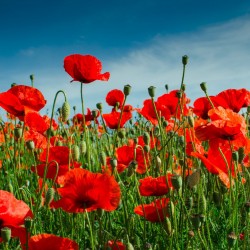
Pipacs Magok (Papaver rhoeas)
Ár
2,05 €
(SKU: MHS 43 PR)
Seeds Gallery EU,
5/
5
<div id="idTab1" class="rte">
<h2><strong>Pipacs Magok (Papaver rhoeas)</strong></h2>
<h2><span style="color: #ff0000;"><strong>Az ár a 100 magot tartalmazó csomagra vonatkozik. </strong></span></h2>
<p>Papaver rhoeas, közönséges nevekkel, köztük közönséges mák, kukorica mák, kukorica rózsa, mezei mák, Flandria mák és a vörös mák egyéves lágyszárú virágos növényfaj a mák Papaveraceae családjában. Mezőgazdasági gyomként figyelemre méltó (ezért a közönséges nevek, beleértve a "kukoricát" és a "szántót"). Különösen az Egyesült Királyságban használják az elesett katonák és egy másik katonaság emlékének szimbólumaként, az első világháború alatt és azt követően.<br /><br />A papaver rhoeas változó, egyenes egyéves, hosszú élettartamú talajmag-bankot képez, amely csírázhat, ha a talajt zavarják. Az északi féltekén általában késő tavasszal virágzik (május és október között az Egyesült Királyságban), de ha elég meleg az idő, más virágok gyakran megjelennek ősz elején. Körülbelül 70 cm (28 hüvelyk) magasságig nő. A szárak nagy, mutatós, 5–10 cm-es (2–4 hüvelykes) virágokat tartalmaznak, négy szirommal, amelyek élénkpirosak, leggyakrabban fekete folt van az aljukon. A szirmok kissé átfedik egymást. A növény meleg évszakban akár 400 virágot is képes termelni, amelyek csak egy napig tartanak. A virágszárat általában durva szőrszálak borítják, amelyeket derékszögben tartanak a felszínhez, ami segít megkülönböztetni azt a Papaver dubiumtól, amelyben a szőrszálakat általában jobban elismerik (vagyis a szárhoz szorosan tartják). A kapszulák szőrtelenek, obovoid alakúak (tojás alakúak), a szélességüknél kevesebb, mint kétszer olyan magasak, a megbélyegzés legalább olyan széles, mint a kapszula. A Papaver sok más fajához hasonlóan a növény is fehér vagy sárgás latexet áraszt, amikor a szövetek megtörnek.<br /><br />Nem minden, a kereskedelemben kapható kukoricamák piros virágú. A szelektív tenyésztés sárga, narancssárga, rózsaszín és fehér fajtákat eredményezett. A Shirley mák jól ismert fajta. A Shirley-ből származó nagyon halvány foltos változat is elérhető.<br /><br />Az 'Evelina' néven ismert, majdnem fekete virágú hibridet az 1990-es évek végén tenyésztették Olaszországban, a P. dubium-szal, de úgy tűnik, hogy kereskedelemben nem kapható.<br /><br />Fitokémia<br /><br />A Papaver rhoeas tartalmaz egy rhoeadine nevű alkaloidot, amely enyhe nyugtató. Rhoeadinsav, papaverinsav és rhoeagenin is található ebben a növényben.<br /><br />Használ<br /><br />A gyakran termesztett kerti dekoratív Shirley mák ennek a növénynek a fajtája.<br /><br />A fekete mag ehető, és akár önmagában, akár a kenyér összetevőjeként fogyasztható. A magból készült olajat Franciaországban nagyra értékelik.<br /><br />A szirmok vörös színezéket tartalmaznak, amelyet egyes gyógyszerekben és borokban használnak; a szárított szirmait alkalmanként színezik a potpourrisok.<br /><br />A hagyományos népi gyógyászatban köszvényre, fájdalomra és fájdalomra alkalmazták. A szirmokból olyan szirupot készítettek, amelyet gyermekeknek tápláltak, hogy segítsenek nekik aludni.</p>
</div>
<script src="//cdn.public.n1ed.com/G3OMDFLT/widgets.js"></script>
MHS 43 PR (100 S)

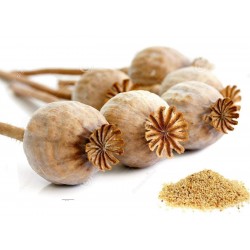
Common Garden White Poppy...
Ár
3,50 €
(SKU: MHS 140)
Seeds Gallery EU,
5/
5
<h2 class=""><strong>Common Garden White Poppy Seeds (Papaver Somniferum)</strong></h2>
<h2><span style="color: #ff0000;">Price for Package of 2000 (1g), 10000 (5g) seeds.</span></h2>
<p><span style="font-size: 10pt;">Papaver somniferum, the Opium poppy, is the species of plant from which opium and poppy seeds are derived. Opium is the source of many narcotics, including morphine (and its derivative heroin), thebaine, codeine, papaverine, and noscapine. The Latin botanical name means the "sleep-bringing poppy", referring to the sedative properties of some of these opiates.</span></p>
<p><span style="font-size: 10pt;">The opium poppy is the only species of Papaveraceae that is an agricultural crop grown on a large scale. Other species, Papaver rhoeas, and Papaver argemone are important agricultural weeds and may be mistaken for the crop.</span></p>
<p><span style="font-size: 10pt;">It is also valuable for ornamental purposes and has been known as the "common garden poppy", referencing all the group of poppy plants.</span></p>
<p><span style="font-size: 10pt;">Poppy seeds of Papaver somniferum are an important food item and the source of poppyseed oil, healthy edible oil that has many uses.</span></p>
<p><span style="font-size: 10pt;"><strong>Description</strong></span></p>
<p><span style="font-size: 10pt;">Papaver somniferum is an annual herb growing to 100cm. All parts of the plant are strongly glaucous, giving a greyish-green appearance, and the stem and leaves are sparsely covered with coarse hairs. The leaves are lobed and clasp the stem at the base. The flowers are up to 120mm diameter, normally with four white, mauve or red petals, sometimes with dark markings at the base. The fruit is a hairless, rounded capsule topped with 12–18 radiating stigmatic rays. All parts of the plant exude white latex when wounded.</span></p>
<p><span style="font-size: 10pt;"><strong>History</strong></span></p>
<p><span style="font-size: 10pt;">Use of the opium poppy predates written history. Images of opium poppies have been found in ancient Sumerian artifacts (circa 4000 BC). The making and use of opium was known to the ancient Minoans.[7] Its sap was later named opion by the ancient Greeks, from whence it gained its modern name of opium.</span></p>
<p><span style="font-size: 10pt;">Opium was used for treating asthma, stomach illnesses, and bad eyesight.</span></p>
<p><span style="font-size: 10pt;">The First and Second Opium Wars among China, the British Empire and France took place in the late 1830s through the early 1860s, when the Chinese attempted to stop western traders smuggling opium into their country.</span></p>
<p><span style="font-size: 10pt;">Many modern writers, particularly in the 19th century, have written on the opium poppy and its effects, notably Thomas de Quincey in Confessions of an English Opium-Eater</span></p>
<p><span style="font-size: 10pt;">The French Romantic composer Hector Berlioz used opium for inspiration, subsequently producing his Symphonie Fantastique. In this work, a young artist overdoses on opium and experiences a series of visions of his unrequited love.</span></p>
<p><span style="font-size: 10pt;">Opium poppies (flower and fruit) appear on the coat of arms of the Royal College of Anaesthetists.</span></p>
<p><span style="font-size: 10pt;"><strong><em>Legality</em></strong></span></p>
<p><span style="font-size: 10pt;"> Opium poppy cultivation in the United Kingdom does not require a license, but extracting opium for medicinal products does.</span></p>
<p><span style="font-size: 10pt;"> In Italy, it is forbidden to grow P. somniferum to extract the alkaloids, but small numbers of specimens can be grown without special permits for purely ornamental purposes.</span></p>
<p><span style="font-size: 10pt;"> Unlike in its neighboring countries Austria and Switzerland, where opium poppy is still cultivated legally, it has been delegalized in Western Germany after World War II, extending this regulation after German reunification in 1990 also to territories of the former GDR, where opium poppy cultivation had remained legal until then.</span></p>
<p><span style="font-size: 10pt;"> In the United Arab Emirates, where the drug law is especially stern, at least one man was reported to have been imprisoned for possessing poppy seeds obtained from a bread roll.[9]</span></p>
<p><span style="font-size: 10pt;"> In New Zealand, section 9(4) of the Misuse of Drugs Act states, "It shall be a defense to a charge under subsection (1) [Cultivation of prohibited plants] if the person charged proves that the prohibited plant to which the charge relates was of the species Papaver somniferum and that it was not intended to be a source of any controlled drug or that it was not being developed as a strain from which a controlled drug could be produced."</span></p>
<p><span style="font-size: 10pt;"> In northern Burma, opium bans have ended a century-old tradition of growing poppy. Between 20,000 and 30,000 ex-poppy farmers left the Kokang region as a result of the ban in 2002.[11] People from the Wa region, where the ban was implemented in 2005, fled to areas where growing opium is still possible.</span></p>
<p><span style="font-size: 10pt;"> In the United States, opium is listed as a Schedule II controlled substance by the Drug Enforcement Administration. In addition, "Opium poppy and poppy straw" are also prohibited.[12] However, this is not typically enforced for poppies grown or sold for ornamental or food purposes.[4] Though the opium poppy is legal for culinary or æsthetic reasons, poppies were once grown as a cash crop by farmers in California; the law of poppy cultivation in the United States is somewhat ambiguous.</span></p>
<p><span style="font-size: 10pt;">The reason for the ambiguity is because The Opium Poppy Control Act of 1942 (now repealed),[14][15][16] stated that any opium poppy should be declared illegal, even if the farmers were issued a state permit. § 3 of The Opium Poppy Control Act stated:</span></p>
<p><span style="font-size: 10pt;"> It shall be unlawful for any person who is not the holder of a license authorizing him to produce the opium poppy, duly issued to him by the Secretary of the Treasury in accordance with the provisions of this Act, to produce the opium poppy, or to permit the production of the opium poppy in or upon any place owned, occupied, used, or controlled by him.</span></p>
<p><span style="font-size: 10pt;">This led to the Poppy Rebellion, and to the Narcotics Bureau arresting anyone planting opium poppies and forcing the destruction of poppy fields of anyone who defied the prohibition of poppy cultivation. Though the press of those days favored the Federal Bureau of Narcotics, the state of California supported the farmers who grew opium poppies for their seeds for uses in foods such as poppyseed muffins. Today, this area of law has remained vague and remains somewhat controversial in the United States. The Opium Poppy Control Act of 1942 was repealed on 27 October 1970.</span></p>
<p><span style="font-size: 10pt;"> The seeds themselves contain very small amounts of opiates,[4] and have no measurable narcotic effect in small quantities. See poppy tea. However, the television show MythBusters demonstrated that one could test positive for narcotics after consuming four poppy seed bagels. On the show Brainiac: Science Abuse, subjects tested positive after eating only two poppy seed bagels.</span></p>
<p><span style="font-size: 10pt;"><strong>Medicine</strong></span></p>
<p><span style="font-size: 10pt;">Australia (Tasmania), Turkey, and India are the major producers of the poppy for medicinal purposes and poppy-based drugs, such as morphine or codeine.[23] The USA has a policy of sourcing 80% of its narcotic raw materials from the traditional producers, India, and Turkey.</span></p>
<p><span style="font-size: 10pt;">A recent initiative to extend opium production for medicinal purposes called Poppy for Medicine was launched by The Senlis Council which proposes that Afghanistan could produce medicinal opium under a scheme similar to that operating in Turkey and India.[25] The Council proposes licensing poppy production in Afghanistan, within an integrated control system supported by the Afghan government and its international allies, to promote economic growth in the country, create vital drugs and combat poverty and the diversion of illegal opium to drug traffickers and terrorist elements. Interestingly, Senlis is on record advocating the reintroduction of poppy into areas of Afghanistan, specifically Kunduz, which has been poppy free for some time.</span></p>
<p><span style="font-size: 10pt;">The Senlis proposal is based in part on the assertion that there is an acute global shortage of opium poppy-based medicines some of which (morphine) are on the World Health Organisation's list of essential drugs as they are the most effective way of relieving severe pain. This assertion is contradicted by the International Narcotics Control Board (INCB), the "independent and quasi-judicial control organ monitoring the implementation of the United Nations drug control conventions". INCB reports that the supply of opiates is greatly in excess of demand.</span></p>
<p><span style="font-size: 10pt;">In March 2010, researchers from the Department of Biological Sciences at the University of Calgary published an article in Nature Chemical Biology about their discovery of two enzymes and their encoding genes, thebaine 6-O-demethylase (T6ODM) and codeine O-demethylase (CODM), involved in morphine biosynthesis derived from the opium poppy.[27] The enzymes were identified as non-heme dioxygenases and were isolated using functional genomics.[27] Codeine O-demethylase produces the enzyme that converts codeine into morphine.</span></p>
<p><span style="font-size: 10pt;"><strong>Medical cultivation in the UK</strong></span></p>
<p><span style="font-size: 10pt;">In late 2006, the British government permitted the pharmaceutical company Macfarlan Smith (a Johnson Matthey company, FTSE 100) to cultivate opium poppies in England for medicinal reasons[29] after Macfarlan Smith's primary source, India, decided to increase the price of export opium latex. This move is well received by British farmers,[citation needed] with a major opium poppy field based in Didcot, England. As of 2012, they were growing in Dorset, Hampshire, Oxfordshire and Lincolnshire as a spring-sown break crop recognized under the single payment scheme farm subsidy.[30] The Office of Fair Trading has alerted the government to their monopoly position on growing in the UK and worldwide production of diamorphine and recommended consideration.[29] The governments response advocated the status quo, being concerned interference might cause the company to stop production.</span></p>
<p><span style="font-size: 10pt;"><strong>Use as food</strong></span></p>
<p><span style="font-size: 10pt;">The opium poppy is the source of two food ingredients: poppy seed and poppyseed oil. The seeds contain very low levels of opiates,[4] and the oil extracted from them contains even less. Both the oil and the seed residue also have commercial uses.</span></p>
<p><span style="font-size: 10pt;"><strong>Poppy seeds</strong></span></p>
<p><span style="font-size: 10pt;">Poppy seeds are commonly used in cuisine from many different cultures. They can be dry roasted and ground to be used in wet curry (curry paste) or dry curry. They have a creamy and nut-like flavor, and when used with ground coconut, the seeds provide a unique and flavor-rich curry base.</span></p>
<p><span style="font-size: 10pt;"><strong>Ornamental cultivation</strong></span></p>
<p><span style="font-size: 10pt;">Once known as the "common garden poppy", live plants and seeds of the opium poppy are widely sold by seed companies and nurseries in most of the western world, including the United States. Poppies are sought after by gardeners for the vivid coloration of the blooms, the hardiness and reliability of the poppy plants, the exotic chocolate-vegetal fragrance note of some cultivars, and the ease of growing the plants from purchased flats of seedlings or by direct sowing of the seed. Poppyseed pods are also sold for dried flower arrangements.</span></p>
<p><span style="font-size: 10pt;">Since "opium poppy and poppy straw" are listed in Schedule II of the United States' Controlled Substances Act, a DEA license may be required to grow poppies in ornamental or display gardens. In fact, the legal status of strictly ornamental poppy gardens is more nuanced, and destruction of ornamental poppy installations or prosecution of gardeners (except those caught extracting opium via capsule scarification or tea extraction) are virtually unheard of.[4] During the early spring, opium poppies can be seen flowering in gardens throughout North America and Europe, and beautiful displays are found in many private planters, as well as in public botanical and museum gardens (e.g., United States Botanical Garden, Missouri Botanical Garden, North Carolina Botanical Garden).</span></p>
<p><span style="font-size: 10pt;">Many countries grow the plants, and some rely heavily on the commercial production of the drug as a major source of income. As an additional source of profit, the seeds of the same plants are sold for use in foods, so the cultivation of the plant is a significant source of income. This international trade in seeds of P. somniferum was addressed by a UN resolution "to fight the international trade in illicit opium poppy seeds" on 28 July 1998.</span></p>
<p><span style="font-size: 10pt;"><strong>Popular culture</strong></span></p>
<p><span style="font-size: 10pt;">In the 19th century Thomas de Quincey wrote Confessions of an English Opium-Eater (1821). A book on Opium and allegedly the first book in the series of drug-addiction literature.</span></p>
<p><span style="font-size: 10pt;">Recently, a feature film entitled The Opium Eater was released exploring the life of Eric Detzer and how he would go about acquiring opium poppies from flower shops and gardens in the Pacific Northwest (north of Seattle) to feed his addiction. This true story is based on an autobiography, Poppies: Odyssey of an Opium Eater written by Detzer, and starring David Bertelsen. Since the festival release of this film in Breckenridge, CO, eBay has stopped allowing the sale of opium poppy pods on their auction site. This may also be attributed to the death of a Colorado teen, who overdosed on opium tea around the same time.</span></p>
<p><span style="font-size: 10pt;">What may be the most well known literary use of the poppy occurs both in L. Frank Baum's The Wonderful Wizard of Oz and in MGM's classic 1939 film based on the novel.</span></p>
<p><span style="font-size: 10pt;">In the novel, while on their way to the Emerald City, Dorothy, the Scarecrow, the Tin Man, and the Cowardly Lion walk through a field of poppies, and both Dorothy and the Lion mysteriously fall asleep. The Scarecrow and the Tin Man, not being made of flesh and blood, are unaffected. They carry Dorothy to safety and place her on the ground beyond the poppy field. While they are considering how to help the Lion, a field mouse runs in front of them, fleeing a cougar. The Tin Man beheads the cougar with his axe, and the field mouse pledges her eternal gratitude. Being the Queen of the Field Mice, she gathers all her subjects together. The Tin Man cuts down several trees, and builds a wagon. The Lion is pushed onto it, and the mice pull the wagon safely out of the poppy field.</span></p>
<p><span style="font-size: 10pt;">In the 1939 film, the sequence is considerably altered. The poppy field is conjured up by the Wicked Witch of the West, and it appears directly in front of the Emerald City, preventing the four travelers from reaching it. As in the novel, Dorothy and the Cowardly Lion fall asleep, but in a direct reversal of the book, the Scarecrow and the Tin Man are unable to carry Dorothy. Glinda, who has been watching over them, conjures up a snowfall which kills the poppies' narcotic power and enables Dorothy and the Lion to awaken. Unfortunately, the Tin Man has been weeping in despair, and the combination of his tears and the wet snow has caused him to rust. After he is oiled by Dorothy, the four skip happily toward the Emerald City.</span></p>
<p><span style="font-size: 10pt;">In Baum's other Oz books, Oz's ruler, Princess Ozma, is often shown wearing poppies in her hair as decoration.</span></p><script src="//cdn.public.n1ed.com/G3OMDFLT/widgets.js"></script>
MHS 140 (1g)


Ez a termék PayPal-lal vagy kártyával nem fizethető

Shirley Poppy Seeds Mixed...
Ár
1,95 €
(SKU: MHS 43)
Seeds Gallery EU,
5/
5
<div id="idTab1" class="rte">
<h2><strong>Shirley Poppy Seeds Mixed Colors, Decorative, Ornamental</strong></h2>
<h2><span style="color: #ff0202;"><strong>Price for a Package of 200 seeds.</strong></span></h2>
<p>Shirley Poppy (Papaver Rhoeas) - The Shirley Poppy comes from Shirley, England, where in the 1880s, a local vicar carefully selected and hybridized Poppies in his own wild flower garden. Over many years he obtained a strain of Poppies ranging in colors from white to pale lilac to pink and red, and unlike the wild Poppies these had no dark blotches at the base of the petals. Over the years, further wildflower Poppy selection has created the semi-double and double forms, as well as flowers with a ring of contrasting color around the edge called the picotee form. Easily grown from Shirley Poppy seeds, gardeners enthusiastically grow this variety for the wonderful display of diverse color and forms. How to Grow Poppies: Directly sow Poppy seeds in early spring before frosts have finished. Shirley Poppies grow best in loose soil that drains well. Press the flower seeds firmly into the soil and keep the soil moist until germination.<br /><br />Flower Specifications<br /><br /> Season: Annual<br /> USDA Zones: 3 - 9<br /> Height: 12 - 15 inches<br /> Bloom Season: Summer<br /> Bloom Color: Mix<br /> Environment: Full sun<br /> Soil Type: Loose, well-drained, pH 6.1 - 7.3<br /> Deer Resistant: Yes<br /><br />Planting Directions<br /><br /> Temperature: 55 - 60F<br /> Average Germ Time: 21 - 28 days<br /> Light Required: Yes<br /> Depth: Do not cover the seed but press into the soil<br /> Moisture: Keep seeds moist until germination<br /> Plant Spacing: 12 inches</p>
</div>
MHS 43 (200 S)

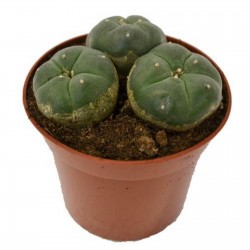
Peyote Seeds (Lophophora...
Ár
2,85 €
(SKU: CT 2)
Seeds Gallery EU,
5/
5
<h2><strong>Peyote Seeds (Lophophora williamsii)</strong></h2>
<h2><span style="color: #ff0000;"><strong>Price for Package of 5 seeds.</strong></span></h2>
<p>Lophophora williamsii (/loʊˈfɒfərə wɪliˈæmsiaɪ/) or peyote (/pəˈjoʊti/) is a small, spineless cactus with psychoactive alkaloids, particularly mescaline. Peyote is a Spanish word derived from the Nahuatl, or Aztec, peyōtl [ˈpejoːt͡ɬ], meaning "glisten" or "glistening". Other sources translate the Nahuatl word as "Divine Messenger".[3][4] Peyote is native to Mexico and southwestern Texas. It is found primarily in the Chihuahuan Desert and in the states of Coahuila, Nuevo León, Tamaulipas, and San Luis Potosí among scrub. It flowers from March to May, and sometimes as late as September. The flowers are pink, with thigmotactic anthers (like Opuntia).</p>
<p>Known for its psychoactive properties when ingested, peyote is used worldwide,[citation needed] having a long history of ritualistic and medicinal use by indigenous North Americans. Peyote contains the hallucinogen mescaline.</p>
<p>The various species of the genus Lophophora grow low to the ground and they often form groups with numerous, crowded shoots. The blue-green, yellow-green or sometimes reddish-green shoots are mostly flattened spheres with sunken shoot tips. They can reach heights of from 2 to 7 centimeters (0.79 to 2.76 in) and diameters of 4 to 12 cm (1.6 to 4.7 in). There are often significant, vertical ribs consisting of low and rounded or hump-like bumps. From the cusp areoles arises a tuft of soft, yellowish or whitish woolly hairs. Spines are absent. Flowers are pink or white to slightly yellowish, sometimes reddish. They open during the day, are from 1 to 2.4 cm long, and reach a diameter from 1 to 2.2 cm.</p>
<p>The cactus produces flowers sporadically; these are followed by small edible pink fruit. The club-shaped to elongated, fleshy fruits are bare and more or less rosy colored. At maturity, they are brownish-white and dry. The fruits do not burst open on their own and they are between 1.5 and 2 cm long. They contain black, pear-shaped seeds that are 1 to 1.5 mm long and 1 mm wide. The seeds require hot and humid conditions to germinate. Peyote contains a large spectrum of phenethylamine alkaloids. The principal one is mescaline for which the content of Lophophora williamsii is about 0.4% fresh[5] (undried) and 3–6% dried.</p>
<p>Peyote is extremely slow growing. Cultivated specimens grow considerably faster, sometimes taking less than three years to go from seedling to mature flowering adult. More rapid growth can be achieved by grafting peyote onto mature San Pedro root stock. The top of the above-ground part of the cactus, the crown, consists of disc-shaped buttons. These are cut above the roots and sometimes dried. When done properly, the top of the root forms a callus and the root does not rot.< When poor harvesting techniques are used, however, the entire plant dies. Currently in South Texas, peyote grows naturally but has been over-harvested, to the point that the state has listed it as an endangered species.[citation needed] The buttons are generally chewed, or boiled in water to produce a psychoactive tea. Peyote is extremely bitter and most people are nauseated before they feel the onset of the psychoactive effects.</p>
<p><strong>Uses</strong></p>
<p><strong>Psychoactive and medicinal</strong></p>
<p>When used for its psychoactive properties, common doses for pure mescaline range from roughly 200 to 400 mg. This translates to a dose of roughly 10 to 20 g of dried peyote buttons of average potency; however, potency varies considerably between samples, making it difficult to measure doses accurately without first extracting the mescaline. The effects last about 10 to 12 hours.[10] Peyote is reported to trigger rich visual or auditory effects (see synesthesia).</p>
<p>In addition to psychoactive use, some Native American tribes use the plant in the belief it may have curative properties. They employ peyote to treat such varied ailments as toothache, pain in childbirth, fever, breast pain, skin diseases, rheumatism, diabetes, colds, and blindness. Peyote also contains an alkaloid called peyocactin. It is now called hordenine. Peyote poisoning has been a concern in California.</p>
<p><strong>History</strong></p>
<p>In 2005 researchers used radiocarbon dating and alkaloid analysis to study two specimens of peyote buttons found in archaeological digs from a site called Shumla Cave No. 5 on the Rio Grande in Texas. The results dated the specimens to between 3780 and 3660 BCE. Alkaloid extraction yielded approximately 2% of the alkaloids including mescaline in both samples. This indicates that native North Americans were likely to have used peyote since at least five-and-a-half thousand years ago.[16]</p>
<p>Specimens from a burial cave in west central Coahuila, Mexico have been similarly analyzed and dated to 810 to 1070 CE.</p>
<p>From earliest recorded time, peyote has been used by indigenous peoples, such as the Huichol[18] of northern Mexico and by various Native American tribes, native to or relocated to the Southern Plains states of present-day Oklahoma and Texas. Its usage was also recorded among various Southwestern Athabaskan-language tribal groups. The Tonkawa, the Mescalero, and Lipan Apache were the source or first practitioners of peyote religion in the regions north of present-day Mexico.[19] They were also the principal group to introduce peyote to newly arrived migrants, such as the Comanche and Kiowa from the Northern Plains. The religious, ceremonial, and healing uses of peyote may date back over 2,000 years.</p>
<p>Under the auspices of what came to be known as the Native American Church, in the 19th century, American Indians in more widespread regions to the north began to use peyote in religious practices, as part of a revival of native spirituality. Its members refer to peyote as "the sacred medicine", and use it to combat spiritual, physical, and other social ills. Concerned about the drug's psychoactive effects, between the 1880s and 1930s, U.S. authorities attempted to ban Native American religious rituals involving peyote, including the Ghost Dance. Today the Native American Church is one among several religious organizations to use peyote as part of its religious practice. Some users claim the drug connects them to God.</p>
<p>Traditional Navajo belief or ceremonial practice did not mention the use of peyote before its introduction by the neighboring Utes. The Navajo Nation now has the most members of the Native <strong>American Church.</strong></p>
<p>Dr. John Raleigh Briggs (1851–1907) was the first to draw scientific attention of the Western scientific world to peyote.[22] Louis Lewin described Anhalonium lewinii in 1888.[23] Arthur Heffter conducted self experiments on its effects in 1897.[24] Similarly, Norwegian ethnographer Carl Sofus Lumholtz[25] studied and wrote about the use of peyote among the Indians of Mexico. Lumholtz also reported that, lacking other intoxicants, Texas Rangers captured by Union forces during the American Civil War soaked peyote buttons in water and became "intoxicated with the liquid".</p>
<p>The US Dispensatory lists peyote under the name Anhalonium, and states it can be used in various preparations for neurasthenia, hysteria and asthma.</p>
<p><strong>Adverse reactions</strong></p>
<p>A study published in 2007 found no evidence of long-term cognitive problems related to peyote use in Native American Church ceremonies, but researchers stressed their results may not apply to those who use peyote in other contexts.[27] A four-year large-scale study of Navajo who regularly ingested peyote found only one case where peyote was associated with a psychotic break in an otherwise healthy person; other psychotic episodes were attributed to peyote use in conjunction with pre-existing substance abuse or mental health problems.[28] Later research found that those with pre-existing mental health issues are more likely to have adverse reactions to peyote.[29] Peyote use does not appear to be associated with hallucinogen persisting perception disorder (a.k.a. "flashbacks") after religious use.[30] Peyote does not seem to be associated with physical dependence, but some users may experience psychological dependence.</p>
<p>Peyote can have strong emetic effects, and one death has been attributed to esophageal bleeding caused by vomiting after peyote ingestion in a Native American patient with a history of alcohol abuse.[32] Peyote is also known to cause potentially serious variations in heart rate, blood pressure, breathing, and pupillary dilation.</p>
<p>Research into the huichol natives of central-western Mexico, who have taken peyote regularly for an estimated 1,500 years or more, found no evidence of chromosome damage in either men or women.</p>
CT 2 (5 S)





